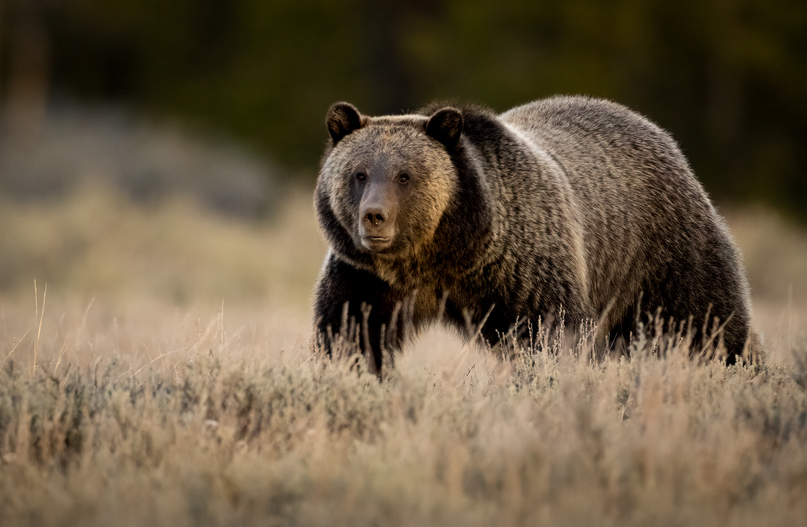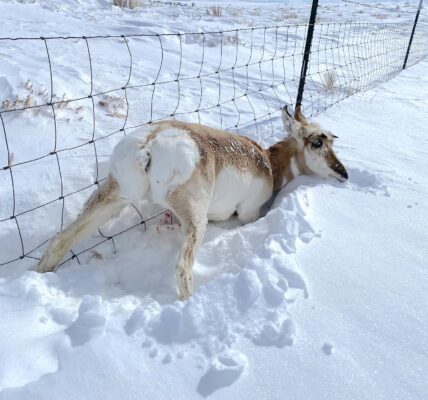
By Zac Taylor
Powell Tribune
Via Wyoming News Exchange
The Yellowstone area grizzly will not be delisted by the U.S. Fish and Wildlife Service under the Biden administration, as the service instead announced an alternate proposal Wednesday.
Idaho had asked for an evaluation of the grizzly bear listing and Montana and Wyoming, which together represent the three states with Greater Yellowstone Area grizzlies, had also petitioned the service to delist the area grizzlies. The service found the petitions “not warranted.”
Instead, the service proposed changes to how the grizzly is managed, including eliminating the Greater Yellowstone Ecosystem distinct population segment.
“This reclassification will facilitate recovery of grizzly bears and provide a stronger foundation for eventual delisting,” said Martha Williams, U.S. Fish and Wildlife Service director, in the release. “And the proposed changes to our 4(d) rule will provide management agencies and landowners more tools and flexibility to deal with human/bear conflicts, an essential part of grizzly bear recovery.”
The decision was prompted by Wyoming asking a U.S. District Court judge to order the service to make a decision by Jan. 20 after it had delayed a decision far longer than initially prescribed.
“It has always been clear the Biden administration had no intention of delisting the Greater Yellowstone Ecosystem grizzly bear. This latest move to keep a fully-recovered population on the Endangered Species List and eliminate the DPS confirms this decision is driven by politics and not biology,” Gov. Mark Gordon said in a release.
“The GYE grizzly bear has been delisted twice,” Gordon wrote. “Population determinations should not be made whimsically; lower-48 management approach is not scientifically based. I remain committed to working on delisting grizzly bears in Wyoming and will consider multiple avenues to do so.”
The grizzly bear was initially listed on the ESA in 1975.
There are currently an estimated roughly 1,000 grizzly bears inside the DMA. According to a 2022 U.S. Fish and Wildlife Service report, grizzly bears currently occupy about 98% of suitable habitat in the DMA and 30% of the current estimated distribution is occurring beyond the DMA.
When the bears were initially listed, roughly 130 were recorded in the region.
Gordon said Wyoming Game and Fish should manage the state’s population as the ones who live and work in bear country.
“I look forward to working with the Trump administration, Interior Secretary nominee Doug Burgum, and congressional leaders on delisting the GYE grizzly as well as on reforming the broken Endangered Species Act, which has lost its focus on species recovery and returning wildlife to state management,” Gordon said.
The Greater Yellowstone Coalition said in a statement that while the grizzly bear has recovered since being on the ESA, work remains to ensure it continues.
“Grizzly bears on the brink of extinction were one of the main drivers behind Greater Yellowstone Coalition’s founding over 40 years ago. Thankfully, grizzlies are no longer on the brink, but the decision to maintain protections for bears demonstrates more work remains,” said GYC Executive Director Scott Christensen. “Our goal is to ensure that any future transition to state management maintains and builds upon this conservation success long into the future.”
Some environmental groups such as the Center for Biological Diversity were concerned about the proposal permitting the killing of grizzly bears in more situations than under current regulations.
For example, said Andrea Zaccardi, carnivore conservation program legal director, property owners would be allowed to kill bears actively attacking livestock.
“While grizzlies won’t be killed by state-sponsored trophy hunts, I’m concerned that their recovery will be harmed as more bears die at the hands of the livestock industry,” said Zaccardi. “We’ll advocate to maintain all protections that keep grizzly bears alive until recovery is reached.”




